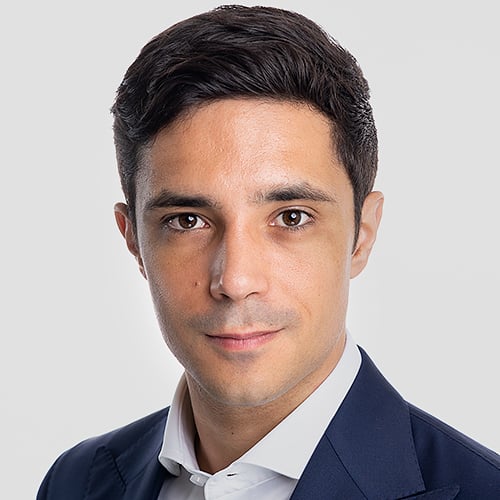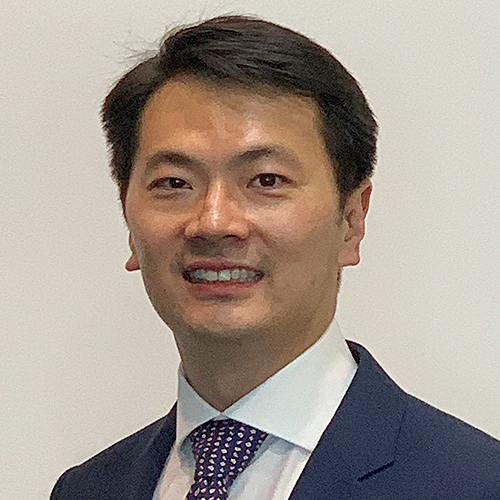Inflation is top of mind for a lot of analysts. We’ve also seen the peso weakening. We’ve seen a potentially larger fiscal deficit and a current account deficit. Are you as worried as some of the critics are telling us?
On inflation, our calculation is that the first part of our tax reform law contributed one half of one percent to the inflation rate and that was by design. We wanted our ‘sin’ products to be expensive and we have achieved that. I saw a survey recently done by a foreign agency saying that the consumption of cigarettes has gone down by 9.1% and we want to dig down deeper to find out if they are among the younger smokers because that’s really our target.
Our inflation is largely imported. The US is doing two things: they’re raising interest rates and they are also shrinking the balance sheet of the Federal Reserve. The Europeans have announced too that they are shrinking the balance sheet of their central bank, so interest rates are rising. When you have interest rates rising abroad, of course there will be more US dollars demanded than pesos. That’s why the value of our peso has deteriorated over time. But it’s a natural result of what’s happening abroad.
Because interest rates are rising abroad, our domestic private companies who have foreign debt have been prepaying. Our estimate is that they have prepaid up to US$4 billion. That is a good sign because they are responding to economic signals and they are responding rationally.
All of this turmoil that has been caused by threatened sanctions has driven up oil prices. Oil prices have spiked from an average of US$55 per barrel towards the end of last year to almost US$75 per barrel now. That will impact our costs of operating here. We are rolling with the punches and we are punching back. Our central bank has been very responsive to inflation. It has responded actively and positively.
The ongoing trade war and outflow from emerging markets have affected many economies. Would it be necessary to start thinking about putting in place measures to try to insulate the economy? Is the economy itself able to take on those challenges?
Our economy is different from others in the sense that we don’t rely too much on foreign trade. We do have a foreign trade deficit, but that is because we are buying a lot of capital goods; people are investing in new factories. They are investing in the future. They are importing power equipment and also construction equipment. We are keenly aware that this will impact our economy but they are investments. They are not purchases of Birkin bags or Kelly bags. They are actual investments in the economy. In fact, the latest GDP figures showed that our investments soared by 20% and that’s very healthy. Our direct foreign investment has also soared by 45% for the first five months of this year as compared to last year. We are transforming slowly our economy from consumption-led to investment-led.
When you look at the Philippines’ infrastructure push in the first two years, are you happy with the progress you’re making or are you behind?
We are just about where we should be. As you know, we did not inherit a large pipeline of projects. We had to spend the first 12 months or 14 months developing that pipeline. Now that pipeline is developed, we are going full blast. We have 75 major projects that we are going to implement. Of those projects, about 45 have gone through the approval process and about 30 are in full-blast implementation. I wish it would be faster. But government being what it is, we have to follow all kinds of procedures to make sure that the public monies are being spent correctly.
For infrastructure, you have proposed a hybrid approach of ODA (official development assistance) from China, Japan and elsewhere, plus private sector PPP (public-private partnership). Are you satisfied that this flow is now coming through and that your strategy is working better than the previous PPP-led approach?
Yes, I am absolutely convinced. I’ll give you an example. Within 18 months of our taking office, we broke ground on the improvement of the Clark Airport. This would not have been possible if it were done through PPP. Since we are financing it ourselves, our cost of money is certainly less than the cost of money of the private sector. Eventually, this project is going to cost less and will cost our taxpayer less money than if it were PPP. This way it is done faster and it's most likely done cheaper. However we are in the process of bidding out the O&M (operations and maintenance) because we know that the private sector is going to be more efficient at running projects. That is the hybrid portion.
You also have to realize something. President Duterte’s foreign policy has yielded a great deal of goodwill in this region and has also yielded a lot of commitments especially from Japan, which offered a US$9 billion equivalent undertaking; and Korea now committed US$1 billion equivalent of ODA money. In PPP, we use private money rather than ODA. ODA money is cheap and long term. The Japanese are offering us one quarter of one percent interest rate in yen, ten years grace period and another 30 years to pay. You can’t beat that! It’s incumbent upon us to use those funds and that opportunity.
There is another thing that will happen. As we do these projects on our own using our ODA funds or our GAA (General Appropriation Act) funds, we are building up the asset base of the country. This asset base is like savings. This can be used by future governments. They can privatize this in case they need the funds. It’s not that we are not doing PPP now but as we have cheap and long-term sources of funds, we are building up our asset base. In the future, the next government may find themselves in a crunch and they can sell those assets. We are also benefiting future generations.
You mentioned commitment on ODAs. But are we seeing actual flows?
These are long-term projects. But let me tell you. For the Japanese subway project, we submitted this to Japan in September (2017). By March or six months later, I signed the first portion of the loan, which is US$1 billion dollars. The projects funded by China are already being implemented. We have the Kaliwa dam, which will improve the water system in Manila. We have the Chico River dam pump irrigation system up north. Soon we will have the project for Safe Philippines improving our security system that will be implemented by the DILG (Department of Interior and Local Government).
Things are moving. The projects that we fund ourselves are very obvious to people: the construction, especially outside Metro Manila. Do you want to know how I get this information that it’s working? People in Negros and Leyte where they grow a lot of (sugar) cane are regularly complaining to me that they can no longer hire cane cutters as they would much rather work in the construction business. I also have information that for the first time ever in history, the growth of retail sales outside mega Manila is faster than the growth experienced in mega Manila. I’ll cite Mcdonald’s. Can you imagine Tacloban has three Mcdonald’s? The expansion of big companies such as Double Dragon, Jollibee, Mcdonald’s and 7-11 are all outside mega Manila. They’re finding that our growth is inclusive. It is in the rural areas and the people are spending money there.
With ODA such as those coming from China, the concern is that they will increase the country’s indebtedness. Are you as worried?
First of all, you have to take a look at our total indebtednes. There was one point in our history when our indebtedness, in particular our foreign indebtedness was 75% of GDP. Right now, it’s 42%. That is total indebtedness. Our foreign indebtedness is only 23% of GDP; it’s relatively low. Number two, they always bring up this danger that we will be indebted to China and that they will own the ports and so on, citing a country in South Asia on that point. I’ve looked into the port project for that particular country. It was actually a port project that was dictated by a top government official who decided to put the project in his hometown. It wasn’t studied very well.
In our case, we have a very sophisticated project evaluation system. And these projects go through a very strict evaluation by ourselves and I’m the chairman of the investment coordinating committee. We are making sure that all these projects are economically viable and will pay for themselves. We are very careful about this. I don’t want my grandchildren to be paying for white elephants. I can assure the Filipino public that our projects are very well studied and we are very keenly aware that we have to be very prudent in borrowing.





.jpg)
.jpg)


